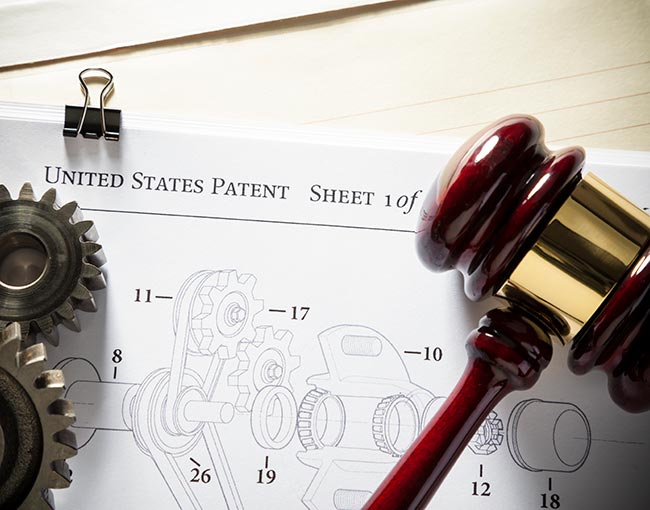In the past decade, the Supreme Court issued two landmark decisions on patent eligibility interpreting 35 U.S.C. § 101 – Mayo Collaborative Services Inc. v. Prometheus Laboratories Inc. (2012) and Alice Corp. v. CLS Bank International (2014). These cases substantially flipped the law, turning § 101 from a weak filter that barely affected patentability to one that substantially limits the types of inventions eligible for patenting in the United States. While initially seen as a benefit to businesses that were harassed by patent-assertion entities with questionable patents, ever since, the Federal Circuit and U.S. Patent and Trademark Office (“USPTO”) have struggled with how to apply this body of law.
In Alice and Mayo, the Supreme Court created a two-step test (the “Alice/Mayo test”). Even if a claimed invention fits into one of the four statutory categories of § 101 (i.e., processes, machines, manufactures, or compositions of matter), it must still satisfy the two-part Alice/Mayo test to be eligible for patenting. First, one must determine whether the claim-at-issue is directed to one of the judicial exceptions—laws of nature, natural phenomena, and abstract ideas. Second, if it is directed to one of those patent-ineligible concepts, the inventor must establish that the elements of the claim transform the nature of the claim into a patent-eligible application. Put another way, in the second step, the inventor must establish an “inventive concept” such that the claim amounts to significantly more than a claim on the ineligible concept itself.
While this test may not seem complicated at first glance, it has proven to be difficult to apply in practice. Inventors and companies often have little clarity on whether their patent claims will be allowed by the USPTO, and if they are allowed, whether they will be found ineligible in later litigation by the district courts or Federal Circuit. Indeed, even the judges on the Federal Circuit often cannot agree. One of the most stark indications of this disagreement arose in the Federal Circuit’s denial of en banc review in Athena Diagnostics v. Mayo Collaborative Services. In this decision, the 12 judge panel split 8 ways. The opinions diverged greatly. Some of the judges yearned for an opportunity to write on a clean slate, some for greater clarity in the form of Supreme Court review, others begged for legislative clarification, and yet others sought clarity for diagnostic tools that were the subject of the patent-at-issue in the case.
Since Alice and Mayo, many parties and a growing body of amicus curiae have petitioned the Supreme Court for review of cases raising Section 101 issues. This includes the Athena Diagnostics decision and many others. Each has been denied. One of the most recent petitions to the Supreme Court, still pending, is American Axle & Manufacturing, Inc. v. Neapco Holdings LLC. In a somewhat surprising cross section of Federal government officials, Senator Thom Tillis, Judge Paul Michel (former Chief Judge of the Federal Circuit), and Director David Kappos (former Director of the USPTO) filed a joint amicus brief. They argued the Supreme Court should resolve the many ambiguities created by application of the Alice/Mayo test to preserve patent protection for sensitive and important technologies. But given the recent denials in other Section 101 cases, it is unclear whether American Axle is the case that will finally pique the interest of the Supreme Court.
Frustrated by the Supreme Court’s failure to take up the issue, certain Senators from across the political spectrum have indicated a desire to legislatively pursue patent reform in a letter to the USPTO acting director. Senators Tillis (R-NC), Hirono (D-HI), Cotton (R-AR) and Coons (D-DE) argue that reform to patent eligibility is necessary for the United States to maintain its lead in certain technology sectors. Yet even this strong, bi-partisan indication provides no evidence that relief is in sight. Notably, the Chair of the Senate’s Subcommittee on Intellectual Property, Senator Leahy (D-VT), was not an author to the letter. And the letter doesn’t even ask for a response from the USPTO for approximately one year. In addition, past Congressional efforts to pass legislation on Section 101 have failed, at least in part, because key stakeholders like the pharmaceutical and tech industries have not been able to reach compromise on the issue.
At the end of the day, it is uncertain what, if any, changes to Section 101 will be brought in 2021. We make no predictions that 2021 will be the year that patent eligibility is finally reformed.
Tony Blum is a partner in Thompson Coburn’s Intellectual Property practice group.

